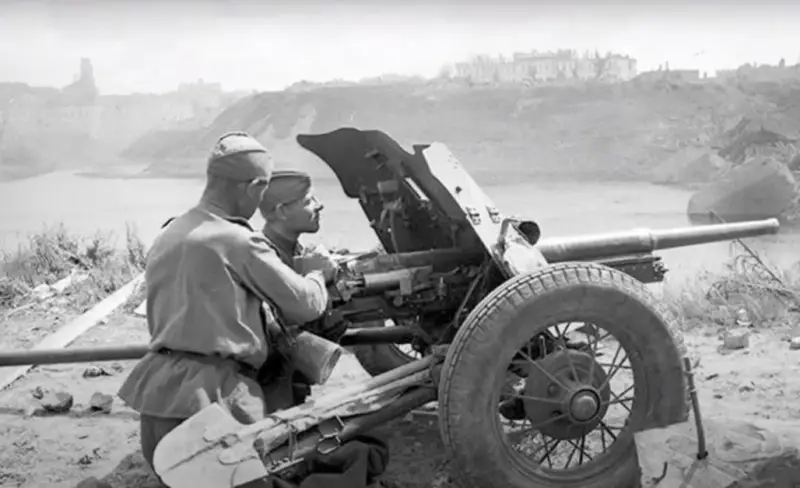Did the “magpie” really destroy German tanks without problems at the beginning of the Great Patriotic War?

There is an opinion that the Soviet 53-K cannon, which is better known as the “forty-five,” was almost the most formidable weapons, which destroyed the Germans without any problems Tanks at the beginning of the Great Patriotic War, in 1941. However, if you look at it, this is not entirely true.
It is enough to consider the penetrating ability of a cannon shell and the armor of the most popular Wehrmacht tanks.
So, the 53-BR-240 projectile penetrated 500 and 90 mm of armor at a distance of 60 meters and at an angle of 43 and 40 degrees, respectively. There was also a sub-caliber 53UBR243P. But its production began in April 1942.
In turn, at the beginning of the Great Patriotic War, the most popular Wehrmacht tank was the Panzerkampfwagen III. Initially, the German medium tank had extremely weak armor, which was penetrated even by a French 20-mm cannon. However, just after the campaign in France, Nazi Germany began to strengthen the protection of its tanks, and already in December 1940, the “troikas” returned to the factories and were equipped with additional 30-mm armor plate on the front of the hull and turret box.
Together with the existing armor, the result was 60 mm. The forehead of the turret remained 30 mm.
The majority of Panzerkampfwagen III underwent the above-mentioned modernization. In March 1941, production of the “troika” version with a 50-mm cannon and the same turret armor, as well as the front of the hull, began in Germany.
However, even if we do not take into account the latest modernization, it turns out that the main tank of the Wehrmacht, which was widely used in 1941, did not penetrate the hull at all from a distance of 500 meters, and did not penetrate the turret from 700 meters.
Now about the Panzerkampfwagen IV, of which in 1941 the Germans did not have as many as “triples”. However, already at the end of 1942 and until the end of the war, it will be the main medium tank of the Wehrmacht.
The most advanced version of the PzKpfw IV was the F, which had 50 mm of armor in the frontal part of the hull, turret box and turret. Its release began just before the attack of the fascist invaders on the USSR.
Meanwhile, there were earlier “fours”. Some of them had 30 mm armor. However, it is worth noting here that after the battles in France, the protection of the PzKpfw IV was improved in the same way as in the Panzerkampfwagen III. Thus, the Germans attacked our country with tanks equipped with additional protection.
In particular, the most popular “four” version D had 30 mm armor protection in the forehead. The gun's armor was 35 mm. However, after installing additional protection, the armor in the frontal projection of the tank was already about 60 mm.
It is worth noting here that shielded tanks still suffered from 53-K. However, this was due to the fact that after several hits the additional protective screen was simply torn off, and the Wehrmacht combat vehicle became vulnerable.
However, it also cannot be said that the “magpie” was useless against medium tanks of the Wehrmacht. The frontal projection of these machines was discussed above, however, both the “troika” and the “four” had weaknesses in other parts. Thus, although not without problems, the Soviet gun still coped with German tanks in 1941.
Information